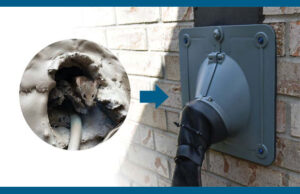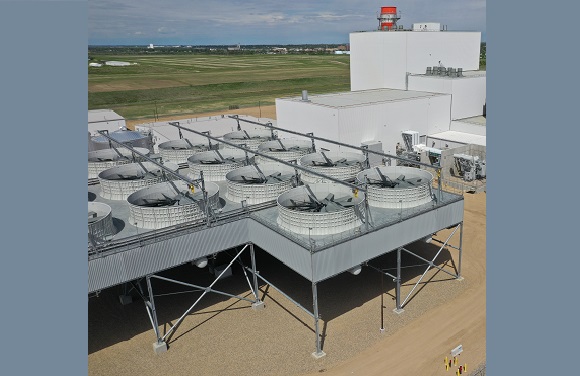
Mice and rats are one of the most common pests that can enter homes through small openings. To protect your home from an infestation, it is important to seal any potential entry points – including those around your air conditioning unit or heat pump system. The most common places mice and rats enter through are small openings such as cracks, crevices, and vents. To best protect your home from these unwelcome guests, it is essential to make sure that all potential entrances are securely blocked. Upon meeting entrance resistance, rodents are likely to move to a location that provides easy access to indoor areas. Here are 3 tips to help you do that:
 1. Seal HVAC Wall Penetrations
1. Seal HVAC Wall Penetrations
An HVAC outlet wall seal product is highly effective for preventing rodents from entering your home. It works by covering any possible entry points, such as cracks and crevices, which can be used to gain access inside. The penetration seal product is typically made of durable and UV-resistant materials like rubber, plastic, or metal and it fits snugly around the outlets to cover them completely. These products also prevent other pests from entering via the HVAC wall penetration as they block off any potential hiding spots or nesting areas. Additionally, they offer an attractive way to block air leakage and moisture, and resist mold growth.
Both new and existing HVAC installations can effortlessly upgrade with Outset Seal’s revolutionary adjustable wall penetration sealing solution, due to its unique hinged closure. It comes with a flexible sleeve design that can reduce piping vibration and noise. With an HVAC outlet wall seal product in place, you can be sure that the outlets are sealed off, securely covered, and tightly closed to keep out any rodents. Contact your local HVAC technician today and get the installation scheduled!
2. Use Steel Wool and Caulk Around Wall Vents
The vents in your walls are a primary access point for rodents as they provide easy pathways between the inside and outside of your home. To prevent mice and rats from entering, you should fill any cracks or holes around each vent with steel wool before adding a barrier of silicone caulk over top to make sure all areas are sealed off. This combined approach will help ensure that rodents cannot squeeze their way into the interior of your property. If you live in a brick or stone home, be careful not to completely seal the vents that are an essential part of the construction. The vents can be filled, but make certain they allow airflow.
To choose the right steel wool and caulk for sealing wall vents, it is important to consider the size of the openings, which will determine the type of material needed. Steel wool comes in various grades ranging from very fine to extra coarse. For larger holes or cracks, a coarser grade should be used as it provides more coverage with fewer gaps. The finer grades are best suited for smaller crevices or thin spaces. When selecting a caulk, it is important to make sure that it can withstand both extreme temperatures and humidity levels. Silicone caulk is a popular choice due to its superior adhesion and durability in all climates and weather conditions. Additionally, a silicone caulk like RectorSeal general-purpose silicone sealant allows it to expand and contract along with changes in temperature without cracking or breaking down.
To ensure that your steel wool and caulk are properly applied around wall vents, you may want to contact a professional pest control service. They can assess your home’s specific needs, provide guidance on which materials will work best for your situation, and help you cover any potential entry points correctly so that no tiny critters can find their way inside.
3. Install Window Screen Mesh Kit Over Fan Grills
The fan grills of AC units and heat pump systems should also be secured by installing kits such as window screen mesh in order to keep out rodents while still providing ventilation throughout the ductwork system. This is especially important if you notice gaps near where the piping connects together on either side of the fan grills, particularly when they are poorly sealed or too wide for a standard cover. In this case, a window screen mesh kit can be used to cover the fan grill and block any openings that could allow pests to enter your home. Screens should be sized so that the airflow to the HVAC unit is not blocked. Proper airflow is critical to the performance and efficiency of an HVAC system.
When selecting a window screen mesh cover for your fan grills, it’s important to make sure it matches the size of the cover correctly – too small, and it won’t effectively block out pests; too large and it might not fit properly – so make sure you measure accurately before purchase. Also consider purchasing additional screening products such as door sweeps or weather stripping for added protection around entry points like windows or doors where rodents are more likely gain access into your home.
Using the three tips in this article, you can easily protect your home from rodents by sealing any potential entry points. The HVAC outlet wall seal product is an effective tool to cover outside outlets and exterior covers, while steel wool and caulk around wall vents will help keep out mice and rats. Additionally, installing a window screen mesh kit over fan grills will provide ventilation without allowing rodent access. By following these simple instructions, you can safeguard your home and peace of mind from pesky intruders!













